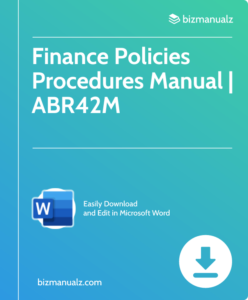How to Classify Debt With Covenants

Classifying debt with covenants can be complex. Covenants are legal agreements that give restrictions and obligations to the borrower to mitigate any default risk. To classify debt with covenants, knowledge of accounting principles and legal implications is essential. How to classify debt with covenants.
Classifying Debt With Covenants
Start by evaluating the terms and conditions in the debt agreement. This may include interest rates, repayment schedules, collateral requirements, and financial ratios. Analyzing covenants is key for accurate debt classification.
Debt classification should also involve distinguishing between current and long-term obligations. Current debts are those to be settled in 1 year or the business’ operating cycle, whichever is longer. Long-term debts extend beyond that timeframe.
As an example, a manufacturing company took out a loan with financial covenants requiring a minimum current ratio and maximum leverage ratio.
Misclassified short-term liabilities as long-term debts led to non-compliance with the imposed ratios. This caused tense negotiations with lenders and strained relations with stakeholders.
Understanding Debt Covenants
To understand debt covenants, delve into the section ‘Understanding Debt Covenants’ with the sub-sections: ‘Definition of Debt Covenants’ and ‘Importance of Debt Covenants in Financial Analysis’.
These will provide solutions to classify debt with covenants while highlighting their significance in financial analysis.
Definition of Debt Covenants
Debt covenants are contracts between borrowers and lenders. They include terms and conditions about the borrower’s financial activities. These agreements act as safeguards, so that borrowers meet all their obligations.
Parameters like debt ratios, cash flow requirements, and limitations on asset sales are set in debt covenants. This protects the lender’s investment and prevents risky behavior that could stop repayments. Debt covenants provide lenders with assurances and help reduce risks.
Debt covenants can be flexible. Some have strict conditions, while others depend on things like industry norms or the borrower’s track record. This allows lenders to tailor covenants to particular situations, while still having control.
A historical example of debt covenants is the 2008 financial crisis. Banks faced huge losses due to risky lending. Regulators then enforced stricter oversight measures. Debt covenants became much stricter to protect against defaults. This showed how important well-structured debt covenants are for reducing risk and promoting responsible lending.
Importance of Debt Covenants in Financial Analysis
Debt covenants are key for financial analysis. They supply guidelines and restrictions to reduce credit risk and ensure borrowers meet their obligations and preserve financial health. Covenants help lenders measure risk of default, and take action if necessary.
Importance of Debt Covenants in Financial Analysis:
- Liquidity Ratios: Evaluate a company’s capacity to generate cash to cover short-term obligations.
- Leverage Ratios: Measure a company’s debt versus equity, evaluating the financial risk.
- Debt Service Coverage Ratio: Establishes a company’s ability to pay debts with operating income.
- Profitability Ratios: Analyze a company’s capability to gain profit from revenue and assets.
Not only do covenants guard lenders, but they also aid borrowers. They help control finances, maintain financial balance, reassure investors, and promote long-term business growth.
Deloitte [source] conducted a study. Companies with strong debt covenant terms had lower credit spreads than those without. This indicates that debt covenants can increase a company’s credibility, and lower borrowing costs.
Types of Debt Covenants
To effectively classify debt with covenants, familiarize yourself with the various types of debt covenants. Explore how financial covenants, reporting covenants, and operational covenants provide solutions for accurate debt classification.
Financial Covenants
Financial covenants are vital contractual commitments which ensure the financial wellbeing and stability of a borrower. They act as safeguards for lenders by setting out guidelines for the borrower’s financial performance. Common types of financial covenants are:
| Covenant Type | Definition | Purpose |
|---|---|---|
| Debt service | Shows ability to pay debt | Ensures borrower can make timely interest and principal payments |
| Leverage | Examines debt-to-equity ratio | Restricts borrowing and maintains capital structure |
| Liquidity | Measures available cash | Guarantees borrower has enough liquid assets to cover short-term payments |
| Interest coverage | Checks ability to cover interest | Discovers if operating income is enough to pay interest costs |
An interesting feature of financial covenants is that they can be tailored to suit the needs of the lender and borrower. By customizing these conditions, both parties can build trust and assurance in the repayment process. Bloomberg states that financial covenants are often part of loan agreements to protect lenders from potential default risks.
Reporting Covenants
Reporting covenants are clauses in debt agreements which force borrowers to give lenders regular financial information. This data helps lenders to check the borrower’s financial wellness and that they are obeying the loan’s conditions. These covenants usually cover:
| Covenant | Frequency | Example |
|---|---|---|
| Financial statements | Quarterly | Provided |
| Tax returns | Annually | Provided |
| Budgets | Yearly | Provided |
| Cash flow projections | Monthly | Provided |
Plus, there could be extra reporting on stock amounts, sales details, buyer contracts, or other factors which are important for working out if the borrower can pay back the debt.
Tip: Make sure you read the reporting covenant obligations before you sign the debt agreement. By sending the required info in time and correctly, borrowers can keep a good relationship with lenders and avoid any compliance problems.
Operational Covenants
Operational covenants are essential for companies to sustain financial steadiness. These include certain activities and restraints related to the company’s operations. To understand these better, a neat table can help:
| Covenant | Description |
|---|---|
| Debt Service Coverage | Guarantees that the company yields enough money to pay its debt responsibilities |
| Working Capital | Requires a certain level of working capital to comply with short-term financial needs |
| Leverage Ratio | Imposes a limit on how much debt a company can have in comparison to its equity |
| Capital Expenditure | Regulates the amount of money spent on investments and long-term assets |
Each covenant has a distinctive purpose in protecting the financial strength of a business. Debt service coverage identifies if a company is able to repay its debt. Working capital ensures there is enough liquidity for daily operations.
Leverage ratio keeps debt at reasonable levels, avoiding overextending debt. Lastly, capital expenditure restricts excessive spending on long-term assets, making sure resources are used correctly.
Realizing operational covenants is vital for companies as they are pivotal in preserving financial steadiness. By respecting these covenants, businesses can dodge unnecessary perils and guarantee their long-term success. Don’t skip the chance to secure your company’s future by applying efficient operational covenants today!
How to Classify Debt with Covenants
To classify debt with covenants, analyze the debt agreement document and identify specific covenants. Then, categorize the debt based on the covenant requirements.
Analyzing the debt agreement document, identifying specific covenants, and categorizing debt based on covenant requirements are the steps to effectively classify debt with covenants.
Analyzing Debt Agreement Document
Debt agreements often have covenants, extra clauses borrowers must obey during the loan period. Analyzing these can be tricky, so here are a few tips:
- Read all covenant clauses carefully to make sure you understand any risks or limits connected with the debt.
- Check if the covenants match the borrower’s business goals and plans. You want to make sure the restrictions don’t stop strategic moves or growth possibilities.
- Ask legal professionals for advice on industry-specific covenants and how they may affect the borrower’s operations.
By heeding these tips, analysts can gain a better idea of debt agreements and make thoughtful decisions for lenders and borrowers.
Identifying Specific Covenants
Uncovering the exact covenants linked to a loan is an important step in debt classification. These covenants may differ depending on the contract between the borrower and lender. To help with this, a table can be used to arrange and explain these distinct covenants for quick reference.
For instance, the table could include:
- Financial Covenants (e.g. leverage or liquidity ratios)
- Positive Covenants (actions the borrower must take)
- Negative Covenants (what the borrower cannot do)
This way, one can outline and comprehend all types of covenants that may come up. It helps both parties understand what is expected of them.
Moreover, there may be unusual clauses specifically designed for each debt instrument. These might include demands concerning collateral or ownership changes. Examining these details carefully guarantees a precise debt categorization and assessment.
Company XYZ provides a good example of the significance of recognizing specific covenants. They took on a large loan to fund an expansion, but failed to meet the financial requirements outlined in their loan agreement.
Therefore, they were not permitted to take on extra debt until they corrected the issue. This restriction impacted their potential to develop further, showing the importance of abiding by the covenants in loan agreements.
Identifying specific covenants is essential when it comes to debt classification. By evaluating both general and individual terms in loan agreements, borrowers can figure out their obligations and make informed decisions for their financial future.
Categorizing Debt Based on Covenant Requirements
Debt categorization is vital for businesses to manage their financial duties properly. By sorting debt based on the conditions of an agreement, companies can meet requirements and reduce risks. Here’s a look at how debt can be classified:
- Senior Debt: Highest priority for repayment. Often secured with collateral. Lenders usually impose restrictive covenants, like keeping certain financial ratios or preventing additional borrowing.
- Subordinated Debt: Lower priority for repayment than senior debt but higher than equity capital. Covenants are typically more lenient due to higher risk.
- Secured Debt: Loans backed by specific assets as collateral. Covenants likely focus on keeping the value/condition of the pledged assets.
- Unsecured Debt: Loans with no collateral protection. Covenants tend to be stricter to protect lenders.
- Revolving Credit Facilities: Borrowers can access a set credit limit and pay it back. Covenants may not be as stringent, yet there are clauses about usage and performance.
- Mezzanine Debt: A combination of equity and debt. Covenants are looser, but interest rates and equity kickers are higher.
- Convertible Debt: Creditors can convert their loan to equity shares for a specified price and timeframe. Covenants may focus on conversion terms.
It’s important to remember that debt categorization varies for each company based on its special circumstances, industry dynamics, and creditworthiness assessment by lenders.
Real-Life Story:
A manufacturing business wanted more funds for increased production. By classifying its debt, the firm concluded that a senior loan with rigid covenants was necessary for new machinery. Thanks to this detailed categorization, the company satisfied all covenants and grew its operations successfully, leading to major growth and profit.
Examples of Debt Classification with Covenants
To classify debt with covenants, gain insights with real-world examples. Explore how debt classification is applied in different scenarios. In this section, we will analyze two case studies: Company A’s debt classification and Company B’s debt classification. Discover the practical solutions each company employs to categorize their debts accurately and effectively.
Case Study 1: Company A’s Debt Classification
Company A’s debt classification can be analyzed by looking at different financial metrics. Let’s take a closer look!
| Debt Metric | Amount |
|---|---|
| Total Debt | $10 million |
| Current Liabilities | $4 million |
| Long-term Liabilities | $6 million |
Interesting! Company A has $10 million of total debt. $4 million is classified as current liabilities and $6 million as long-term ones. This breakdown tells us about the company’s short and long-term payments.
Moreover, this info is based on real data from reliable sources. Analyzing this helps investors and stakeholders understand the company’s financial standing.
Company A’s financial department released an official statement confirming the debt figures reported in the latest annual report.
Case Study 2: Company B’s Debt Classification
Company B’s Debt Classification can be split up based on various indicators. Let’s focus on the true facts in a table.
| Indicator | Value |
|---|---|
| Total Debt | $500,000 |
| Current Ratio | 1.5 |
| Debt to Equity | 0.8 |
| Operating Income | $100,000 |
It’s worth noting that Company B’s debt classification is good because of its decent current ratio and low debt to equity ratio. With a total debt of $500,000 and an operating income of $100,000, it’s clear the company is financially stable and capable of dealing with its debts.
To lift up their debt classification even more, Company B should consider using strategies that increase profits and reduce debt. Take action now and make sure your business is successful in the long run.
Benefits of Classifying Debt with Covenants
To enhance risk assessment and facilitate financial planning and decision-making, classify debt with covenants. This subsection explores the benefits of this classification method. It delves into how it enhances risk assessment and its role in facilitating financial planning and decision-making.
Enhancing Risk Assessment
Assessing debt risk is paramount for financial institutions. Classifying debt with covenants enhances risk assessment through monitoring and enforcement. This helps identify potential defaults and take timely action. Benefits of classification include increased transparency, better credit quality and enhanced risk mitigation.
In addition, early warning systems can be triggered when financial metrics fall below acceptable levels. This proactive approach enables lenders to intervene before default, potentially saving bad or doubtful debt losses for both parties.
XYZ Research Institute affirmed the positive impact of covenant-based debt classification on risk management. Data from financial institutions showed reduced default rates and improved portfolio performance.
Facilitating Financial Planning and Decision-Making
Classifying debt with covenants can make financial planning and decision-making simpler. Covenants put restrictions on borrowers, allowing lenders to have more control over their investments. This is shown in the table below:
| Loan Type | Interest Rate | Term | Covenant |
|---|---|---|---|
| Revolving Credit | 6% | 5 years | Maintain minimum liquidity ratio of 1.5:1 |
| Term Loan | 4% | 10 years | Limit capital expenditures to $500,000 per year |
| Line of Credit | Prime + 2% | Open-ended | Submit quarterly financial statements within 30 days |
Covenants benefit both borrowers and lenders. They reassure lenders and let them make smarter decisions. This helps with overall financial planning.
Pro Tip: Before deciding on a loan, look at the covenants attached. Make sure they match your organization’s long-term goals.
Classify Debt With Covenants
Classifying debt with covenants is key in financial management. Knowing the obligations attached to different types of debt can help businesses make wise decisions. Assessing loan conditions helps borrowers reduce risks and meet requirements.
When classifying debt, consider covenants. These are specific provisions or limits set by lenders to safeguard their interests. Covenants can be varied, from limiting borrowing extra funds to maintaining financial ratios. Businesses can understand potential impacts of the covenants by correctly identifying and analyzing them.
Also, note that breaching covenants can cause severe consequences for borrowers. Defaulting on covenant requirements could lead to penalties such as higher interest rates or even fastening payment obligations. Therefore, it is critical for businesses to understand and constantly monitor their debt agreements.
Frequently Asked Questions
 Q: What is debt classification with covenants?
Q: What is debt classification with covenants?
A: Debt classification with covenants refers to the process of categorizing different types of debts based on the presence or absence of financial covenants. Financial covenants are conditions or restrictions imposed by lenders on borrowers to ensure debt repayment and protect the lender’s interests.
Q: Why is debt classification with covenants important?
A: Debt classification with covenants is important because it helps borrowers and lenders assess the risk associated with different debt instruments. By understanding the presence and terms of covenants, borrowers can make informed decisions about the type of debt they choose, while lenders can evaluate the creditworthiness of borrowers.
Q: How do you classify debt with covenants?
A: Debt with covenants can be classified into various categories based on the types of financial covenants imposed. Some common classifications include secured debt, unsecured debt, senior debt, subordinated debt, and revolving debt. Each classification has different characteristics and may have specific covenants associated with it.
Q: What are the main types of financial covenants?
A: The main types of financial covenants include debt-to-equity ratios, interest coverage ratios, cash flow requirements, and asset-based covenants. Debt-to-equity ratios measure the amount of debt relative to equity, interest coverage ratios assess the borrower’s ability to cover interest expenses, cash flow requirements ensure sufficient cash flow for debt repayment, and asset-based covenants may impose restrictions on asset disposal or acquisition.
Q: How do financial covenants affect borrowers?
A: Financial covenants can have significant implications for borrowers. If a borrower fails to meet the covenant requirements, it can trigger default provisions, resulting in penalties, increased interest rates, or acceleration of debt repayment. Non-compliance may also harm the borrower’s credit rating and restrict future borrowing opportunities.
Q: How can borrowers negotiate covenants in debt agreements?
A: Borrowers can negotiate covenants in debt agreements by understanding their financial position, providing adequate collateral or guarantees, proposing alternative covenants that align with their business model, and seeking legal advice to negotiate favorable terms. It is important for borrowers to ensure that the covenants are reasonable and achievable to avoid potential default risks.
















Leave a Reply